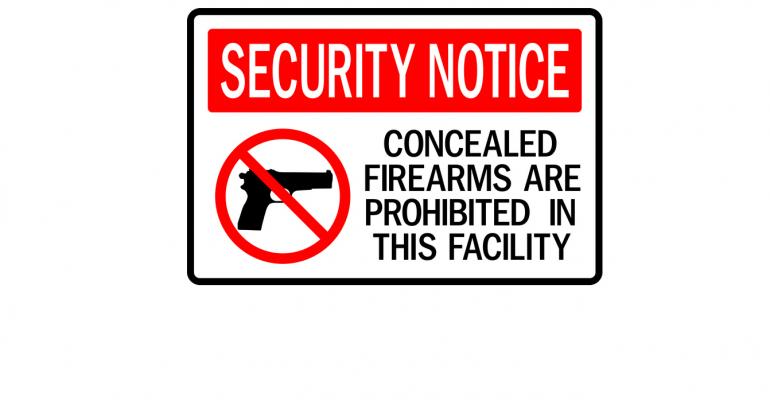When planning for attendee safety at conferences, there’s a lot to consider, from health emergencies to severe weather to cyber security to physical violence. But it’s the last one that may be most on the minds of meeting professionals this week, after the Supreme Court ruled a New York law that heavily restricts the ability to carry a concealed handgun in public is unconstitutional. The decision is expected to lead to challenges to gun-safety laws around the country.
With about 30 percent of Americans owning guns and gun sales rising, planners need to anticipate that some attendees will consider bringing firearms when they travel to a conference. Couple that with the reality of mass shootings in the U.S.—this year there have been 246 mass shootings through June 5—as well as the likelihood of more relaxed gun laws, and risk management around guns becomes increasingly urgent.
Alan Kleinfeld, a meeting professional and on-site crisis management expert, suggests a number of things meeting planners can do to mitigate the risk of guns at an event.
• First, do some research to learn the gun laws in the host destination and the gun policies of the hotel, convention center, and other venues that you’ll be working with. Remember that while a hotel chain might have a certain policy, that policy could only apply to company-owned hotels, not franchised properties, and could vary from state to state. Also understand that hotels do not typically have metal detectors or baggage screening, so enforcement is often minimal.
• Creating and clearly communicating your gun policy to participants is critical. Kleinfeld says it can be part of a broader compact with attendees, where the organization explains which policies it has in place to protect attendees (no guns, no harassment, etc.) and then what the attendee must agree to in order to attend the meeting. Meeting policies should be communicated well in advance of the event.
• Depending on attendee demographics and the sensitivity of a meeting’s agenda, a group could consider bringing in metal detectors and hiring security to ensure that no firearms make it into the conference venue.
• Having a written security and disaster plan in advance of an event is a must, to ensure the planning team knows what to do in the face of an emergency. It could also help prevent the worst-case scenario. Shooters, Kleinfeld notes, often leave telltale messages on social media sites. If monitoring social media is part of your group’s risk-management plan (usually part of defending against reputational risk), those channels should also be monitored for violent language, and the monitor should be trained how to properly report such threats.





